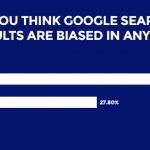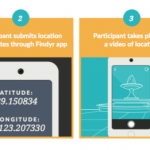Study: smartphone location only accurate to within 93 feet
The report says data reflect bottom line for location accuracy across the industry.

Any vendor that says it can tell you exactly where a mobile user is probably isn’t telling the truth. That’s because, without user self-reporting, beacons or other supplemental location technology, mobile device location is only accurate to within about 93 feet.
That’s the conclusion of a newly released report from PlaceIQ. The company provides location data and mobile advertising and so competes with numerous others selling location to brands and agencies. The main purpose of the report, however, is to demystify mobile location and identify some sort of “ground truth” regarding device location accuracy.
PlaceIQ worked with an independent firm called Findyr to record device-level location in “real world environments”:
Findyr sent people in 5 U.S. cites to 150 specific locations and asked them to record their latitude/longitude coordinates within the Findyr app on their phone. The participants also sent a photo or video of where they were standing to verify their actual physical location. The initial stage of the study determined the difference between the recorded coordinates and the device’s actual location.
The following is a visual representation of the methodology used:

Location accuracy was reflected as the difference between recorded user location vs. actual user location. Accuracy varied in each of the five cities, but, as indicated, average location accuracy across the five markets was 93 feet, or 30 meters.
The five cites tested were Boston, New York, Washington, DC, Chicago and Austin. Here are the location-accuracy findings in each place:
- Boston — 69 feet
- Chicago — 75 feet
- Washington, DC — 76 feet
- New York — 87 feet
- Austin, TX — 91 feet
PlaceIQ explained that Austin location accuracy was worse than other cities because it was less dense and thus probably had fewer WiFi hotspots, though GPS may be more accurate in Austin than in a more heavily developed urban environment. As a reminder, the three methods used (often in combination) to identify device location are GPS, WiFi triangulation and cell-tower triangulation.
What the report argues is that devices, which are the definitive source of user location, can be no more accurate than some number of feet in a given environment. In any event, they’re not exact. In some circumstances, passively detected location can be supplemented with self-reporting, check-ins or beacons (or other indoor location) inside stores.
There are three primary use cases for mobile-location data:
- Audience identification and segmentation
- Real-time (proximity) targeting
- Offline attribution
These three scenarios don’t require identical levels of accuracy. Regardless, identifying mobile user location is a matter of confidence levels, absent a check-in or something similar, because of its probabilistic nature. With geofencing, for example, lower levels of confidence and accuracy are more tolerable than in the case of offline attribution (Did the person actually visit the store?). But this is a longer discussion for a separate article.
Not long ago, Thinknear released its Location Accuracy Index, which showed that location data accuracy in the advertising ecosystem was declining. PlaceIQ founder and CEO Duncan McCall said that this is not truly a “data accuracy” issue. He argues it should be seen instead as a question of fraud and spam, analogous to the issues with bots and viewability for general display advertising.
Publishers, exchanges and others in the ecosystem, in some cases, are turning a blind eye to “location spam” or actively misrepresenting location (e.g., centroid passed off as a true lat-long) because appending location to an ad impression can yield higher CPMs. From McCall’s perspective, “Nobody can ultimately access better location, it’s really about filtering noise, fraud and spam.”
There are various tactics and approaches to do that filtering and verification, which many companies utilize, some of which PlaceIQ describes in its report.
Marketing Land – Internet Marketing News, Strategies & Tips
(29)














